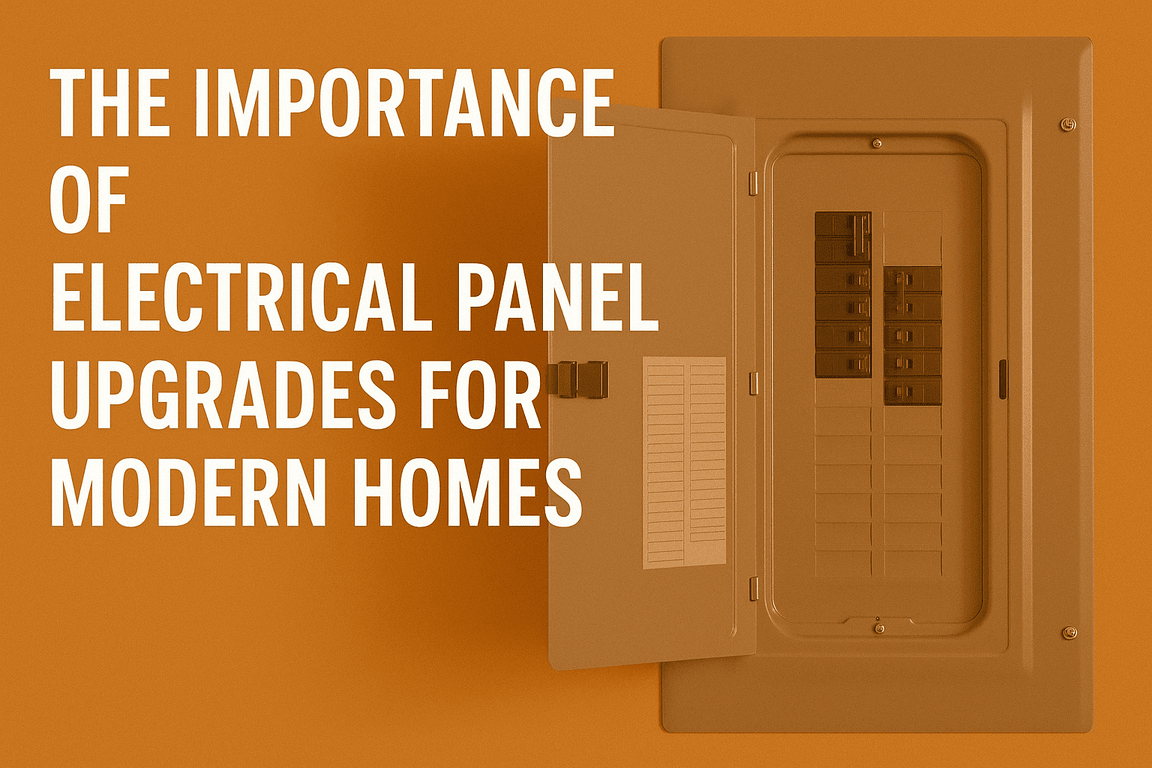Upgrading your electrical panel is no longer a luxury—it’s a necessity for homeowners adapting to modern demands. As homes become smarter, greener, and more tech-integrated, the need for electrical infrastructure that can handle the load is critical. From HVAC systems to electric vehicle chargers and smart home devices, your panel must evolve.
What Is an Electrical Panel and Why It Matters
An electrical panel, also known as a breaker box or distribution board, is the central hub of electricity in your home. It distributes power from your utility to circuits throughout the house. A modern panel supports higher loads, offers better protection, and ensures compatibility with new technologies.
Older panels—especially those rated under 100 amps—can cause:
- Overloaded circuits
- Frequent breaker trips
- Fire hazards
- Non-compliance with building codes
Signs Your Electrical Panel Needs an Upgrade
Recognizing the warning signs early helps you avoid costly damage:
- Frequent blown fuses or tripped breakers
- Flickering or dimming lights
- Buzzing sounds from the panel
- Melted wires or discoloration
- Insufficient outlets or reliance on extension cords
- New appliances or systems causing electrical issues
If you’re expanding your home, installing high-load appliances, or introducing smart technologies, an upgrade is not optional—it’s essential.
Electrical Panel Upgrades and HVAC System Compatibility
Modern HVAC systems are more energy-efficient but also require more consistent power delivery. If your panel is outdated, it may not:
- Provide the amperage necessary for heat pumps or multi-stage systems
- Support zoned systems or variable-speed compressors
- Integrate with smart thermostats and automated climate control
An upgraded panel ensures uninterrupted heating and cooling, especially during peak seasons.
Benefits for HVAC Integration:
- Stable voltage protects system components from damage
- Enables smart HVAC controls like Nest or Ecobee
- Supports dual-fuel systems and auxiliary heating functions
- Prevents nuisance trips during compressor startup
Essential for Electric Vehicle (EV) Charger Installation
The rise of electric vehicles means homeowners are investing in Level 2 EV chargers, which typically require 240V and up to 60 amps. An outdated panel simply can’t handle this load.
Panel Upgrade Advantages for EV Owners:
- Safe charging without overloading other circuits
- Room for dedicated EV breaker slots
- Enables future scalability as EV charger tech evolves
- Increases property value for energy-conscious buyers
Many utility companies and EV manufacturers recommend or require panel upgrades as part of charger installation.
Smart Homes Demand Smarter Panels
With the boom of smart devices, the electrical load in homes is growing exponentially. From automated lighting and smart locks to home theaters and AI voice assistants, the demands have outgrown what a typical 100-amp panel was designed to manage.
Upgrading for Smart Home Compatibility:
- Supports whole-house automation systems
- Ensures clean power for sensitive electronics
- Prevents interference or signal issues from poor power distribution
- Enables integration of battery backups and solar inverters
A panel upgrade is often the first step in home automation, ensuring all systems can run efficiently and safely.
Improved Safety and Insurance Compliance
Upgrading your panel enhances safety significantly:
- Modern circuit breakers trip faster and more reliably
- Arc fault and ground fault protection reduces fire risks
- New panels are built to meet current National Electrical Code (NEC) standards
In many areas, insurance providers won’t cover homes with outdated panels like Zinsco or Federal Pacific. A panel upgrade could help lower premiums or meet conditions for coverage.
Supporting Renewable Energy Systems
If you’re considering installing solar panels or home battery systems, your electrical panel must be compatible. Upgrades ensure:
- Backfeed prevention for grid safety
- Adequate space for solar breakers
- Reliable distribution for solar-powered circuits
- Compatibility with net metering setups
An outdated panel can disqualify you from installing solar systems or delay approvals.
How Panel Upgrades Future-Proof Your Home
Technology is advancing rapidly. Your electrical panel should be ready for:
- Electric water heaters and induction cooktops
- Home saunas or spas
- Backup generators and transfer switches
- Additional outbuildings or garages
Investing in a 200-amp or 400-amp panel ensures your home will meet future energy needs without the need for major rework.
The Panel Upgrade Process: What to Expect
Upgrading an electrical panel involves:
- Assessment by a licensed electrician
- Permit acquisition and coordination with the local utility
- Power shutdown and removal of the old panel
- Installation of a new panel with updated breakers
- Testing and final inspection
The process typically takes 1-2 days, depending on your home’s wiring and utility coordination.
Cost vs. Value: Is It Worth It?
An electrical panel upgrade can cost between $1,500 to $3,500, depending on your location and amperage. However, the return on investment is high when you consider:
- Peace of mind
- Improved home safety
- Increased home value
- Compatibility with modern tech
Many homeowners find that the energy savings, insurance benefits, and ease of future upgrades make it a wise decision.
Final Thoughts: Don’t Let an Outdated Panel Hold You Back
If you’ve added an EV charger, installed a smart thermostat, expanded your HVAC system, or simply noticed your breakers can’t keep up—it’s time. A modern panel keeps your home safe, smart, and scalable.


